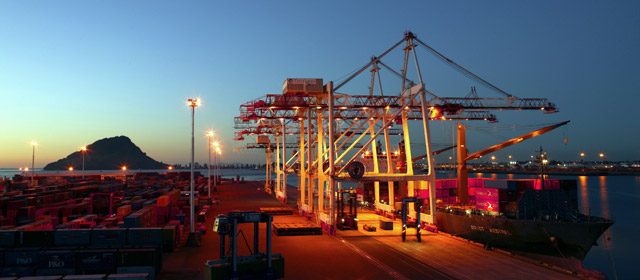Story summary
Early settlement
When European settlers began to arrive in New Zealand in the early 1800s, they needed safe ports and harbours to anchor their ships. They chose to build their settlements where it was safe for the ships bringing people and supplies.
The first landing places were small and roughly built. Many were just areas of mud, or jetties were made with planks held up by barrels that led to the water.
As more ships came, harbours needed to be managed properly, so a system of harbour boards was set up in 1870. Their engineers organised building works.
From small to large ports
Small ports appeared, scattered along the coast and serving their own little communities. These ports grew into larger towns, which became richer as railway lines were built to bring goods from other places. Some ports did better than others – Dunedin, Wellington, Auckland and Lyttelton harbours were busy, while many smaller ports were closed down.
Types of port
New Zealand has three main types of port:
- Major ports: The natural features of Wellington, Auckland and Lyttelton (serving Christchurch) made good harbours because they were sheltered and had deep water.
- River ports: many ports, such as those at Greymouth, Westport and Wanganui, were built in sheltered river mouths. However, rivers could be shallow or have sandbars and ships were often wrecked.
- Breakwater ports: some ports were dangerous because of rough seas. The ports at Timaru, Ōamaru, Napier and New Plymouth were made safe by building huge artificial harbours protected by breakwaters.
The 20th and 21st centuries
Working on wharves was back-breaking, and in the 20th century wharfies (watersiders or longshoremen) held many large protests on the waterfront. Working conditions became better. Cranes and other machinery have made it possible to quickly unload container-loads of cargo.
Recently, the areas around New Zealand’s harbours have been cleaned up, and waterfronts have become places to walk, shop, or have a drink.





